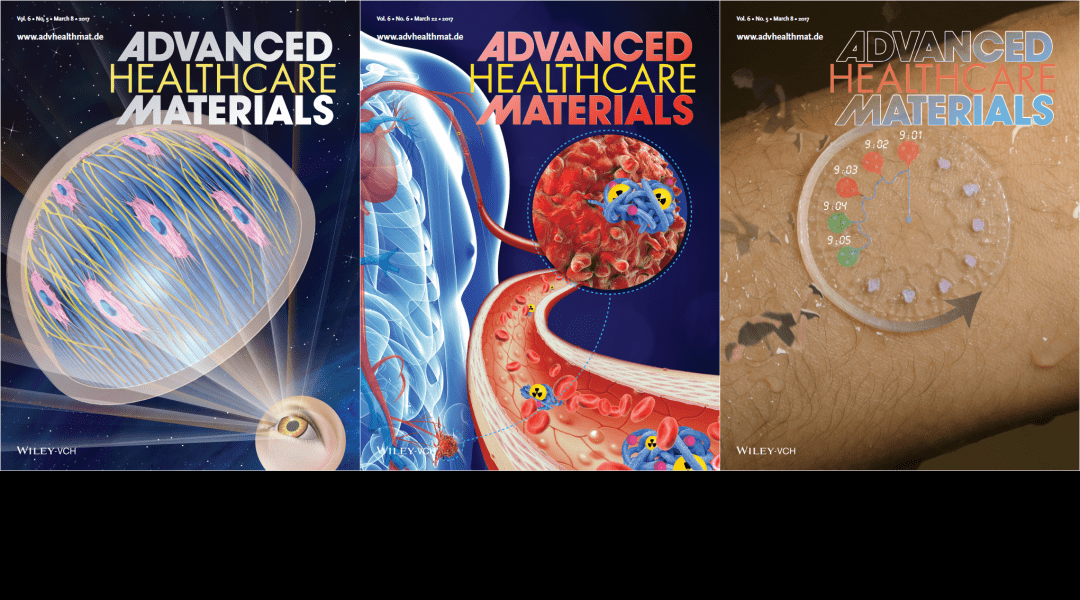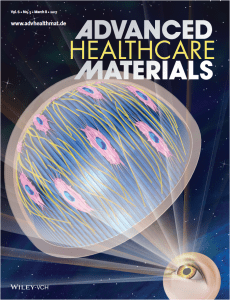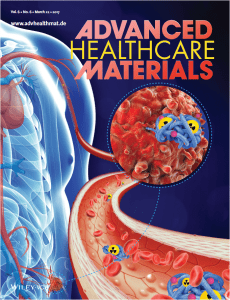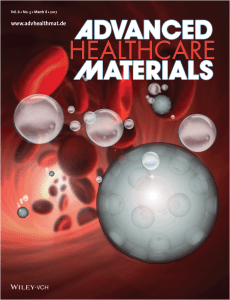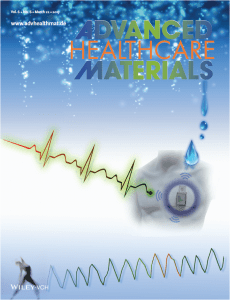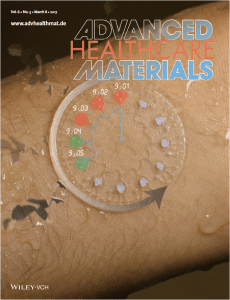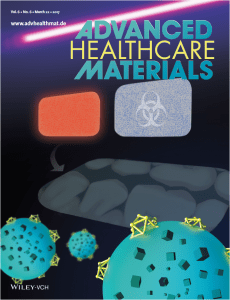Advanced Healthcare Materials celebrates its 5th birthday this year! Since 2012 we have been bringing you the latest breakthroughs in biomedical materials science with a strong focus on improving human health, and we will continue to do so in 2017. Read more about this in our latest editorial.
No access to our published content yet? Make sure to recommend Advanced Healthcare Materials to your librarian. More information can be found here.
In this monthly feature, we highlight the artwork on the covers of both issues of Advanced Healthcare Materials, and of course the research behind it. You can find this month’s issues here and here. Click on the headers below to get to the corresponding papers. Also check out our previous monthly top-downloaded papers feature here.
Patrik Danielson and his team at Umeå University in Sweden created a novel biomimetic 3D corneal model by optimizing the surface topography and mechanical strain, similar to the microenvironment of native cornea. Compared to traditional 2D culture conditions, this 3D culture model, in the form of a collagen-modified, silk fibroin-patterned construct subjected to 3% dome-shaped strain, further enhances the expression of keratocyte and ECM markers, and maintains the keratocyte phenotype, alignment and fusiform cell shape better.
A more extensive news article about this study can be found here.
The utilization of polymeric nanomaterials in combination with imaging- and/or therapy-related radionuclides holds a promising potential for cancer diagnosis and treatment. Holger Stephan, Martin Hrubý and their co-workers from institutes in Dresden (DE), Prague (CZ) and Nijmegen (NL) review the recent advances and emerging opportunities of tumor-targeted radiolabeled polymeric nanomaterials for both non-invasive imaging and treatment of cancer.
Inanc Ortac, Emilia Olson, Robert Mattrey and their team at the University of California, San Diego introduce an intravenously injectable probe to label sites of oxidative injury in vivo. The probe they developed is a nanoparticle platform, enzymatically catalyzing H2O2 to water and oxygen, producing microbubbles detectable by a clinical ultrasound system. They demonstrate the functionality of 200 nm nanoparticles in vivo in a rat ischemic renal injury model.
A wearable skin hydration sensor is developed by Yong Zhu, John Muth and their co-workers from the North Carolina State University. The sensor is made of silver nanowires inlaid in a silicone substrate, which renders the sensor flexible and stretchable. Integrated systems with multimodal sensing capability (e.g., hydration, strain/motion and electrophysiological sensing) are demonstrated in two form factors – wristband and chest patch.
A more extensive news article about this study can be found here.
John Rogers and his team at Northwestern University describe a “skin-like” microfluidic platform that bonds to the skin, collects and stores sweat in a time-sequenced set of chambers. Pressure induced by the sweat glands drives flow through a network of microchannels that incorporates capillary bursting valves for passively guiding sweat through different reservoirs in the system in sequential fashion.
A more extensive news article about this study can be found here.
A smart antibacterial mixed-membrane coating consisting of lysozyme@gold nanoclusters-coated mesoporous silica nanoparticles, encapsulating antibacterial agents in an amphiphilic polymer matrix, is described by Niveen M. Khashab and co-workers from the King Abdullah University of Science and Technology in Saudi Arabia. The membrane successfully senses and inhibits bacterial contaminations on X-ray dental plates via a bacteria-responsive controlled release mechanism. The monitoring of the contamination is simply visualized under UV-light and demonstrates the applicability of the coating for biomedical devices.

